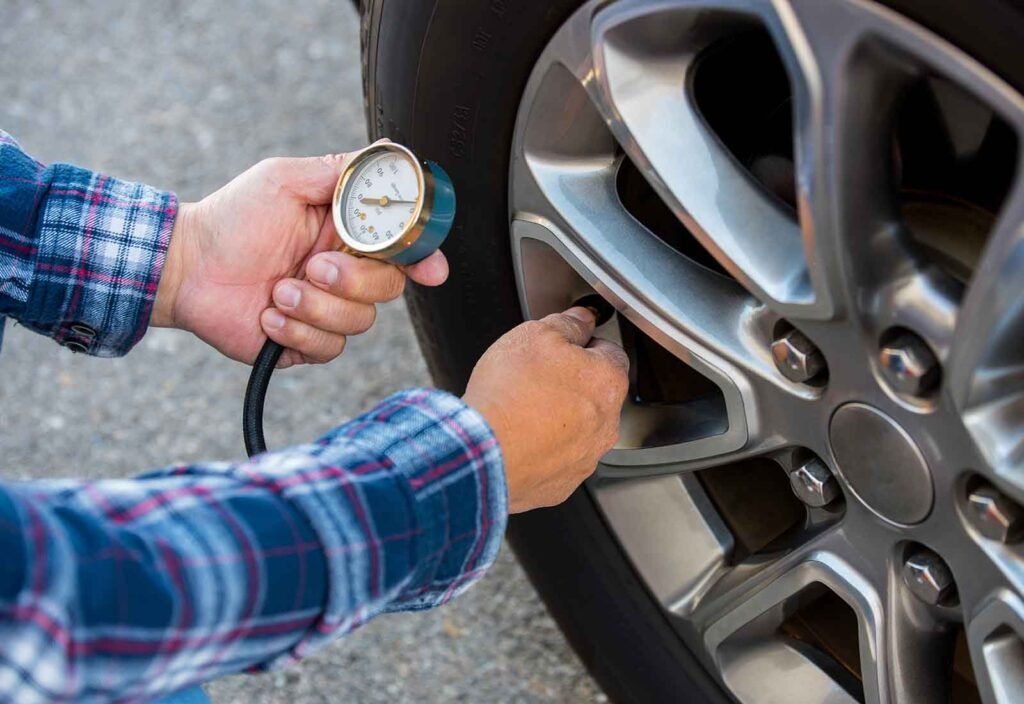New Australian drivers’ first concern is ensuring that their vehicle has reliable and safe tires. Tires are critical for your car’s overall safety because they are the only component that comes into direct contact with the road. Knowing how to maintain and select the proper tires will have a significant impact whether you are driving on city streets, highways, or difficult terrain.
This video will cover basic tire safety requirements that new Australian drivers should be aware of, such as maintenance recommendations and how to select tires with the best performance and longevity. Let’s look at the importance of tire condition and how making sensible decisions can help you stay safe on the road.
1. Regularly check tyre pressure
One of the most important habits for rookie drivers to develop is checking their tire pressure on a regular basis. Underinflated or overinflated tires can create a variety of issues, including poor handling, decreased fuel economy, and an increased chance of blowouts. Tyre pressure should be checked before long road trips, as well as once a month. Always reference the handbook that came with your vehicle to determine the proper pressure level for your tires.
Low tire pressure also causes unequal wear on the tread, necessitating early replacement. Many Australian petrol stations provide free air pumps, making it easy to maintain the proper pressure and improve the life of your tires.
2. Inspect tyre tread depth
Tread depth is also an important factor in tire safety. Low tread depth tires grip the road less, especially in rainy conditions, which can lead to hydroplaning. Although Australian legislation requires a minimum tread depth of 1.5mm, many experts recommend replacing your tires when they reach 3mm for optimal safety.
Modern tires typically contain built-in tread wear indicators or a tread gauge to measure tread depth. Maintaining safe driving conditions requires you to know when it’s time to change your tires, which frequent inspections may help with.
3. Rotate your tyres regularly
Tyre rotation is essential for ensuring even wear across all tires. The weight distribution in the vehicle causes front tires to wear out more quickly than rear tires. Rotating your tires every 10,000 kilometers, or as recommended by your car manufacturer, will improve performance and extend their life.
Tyre rotation is especially important for rookie drivers who are still learning the finer points of driving. It also helps to balance the car’s handling and braking capacity. Consistent tire rotation saves you money in the long run by delaying the need for replacement.
4. Balance and align your tyres
Proper tire balance and alignment are crucial for avoiding uneven wear and ensuring a smooth, comfortable ride. Unbalanced tires can cause uneven wear and vibrations in the steering wheel. In contrast, misalignment can cause the car to drag to one side and make steering difficult.
For new drivers, road safety requires having your tires balanced and aligned every time you rotate them or notice handling issues. Not only can well-maintained tires last longer, but they also improve the overall performance of the car, allowing for easier driving and control.
5. Choose the right tyres for your vehicle
The variety of tire brands and types available can make it difficult for new drivers to choose the right ones. It is critical to select tires that are appropriate for your driving style, vehicle, and local climate. If it rains frequently in your location, you’ll want tires that perform well in wet conditions.
Among the many tyre options in Australia, Kumho tyres stand out as a popular choice due to their balance of affordability, durability, and performance. Many new drivers often ask, Are Kumho tyres good? For drivers who are looking for reliable, budget-friendly tyres, Kumho offers a wide range of options that suit various vehicle types. For more details, you can check out Are Kumho Tyres Good to learn more about how they perform in Australian conditions.
6. Avoid overloading your vehicle
The maximum load rating of each tire indicates the weight that it can reasonably handle. Overloading your automobile may put additional strain on your tires, increasing your risk of a blowout or other tire failure. New drivers should be conscious of their vehicle’s weight constraints and avoid hauling unnecessary heavy items.
Always check the load index on the sidewall of your tire to ensure that you are not exceeding the recommended load for your vehicle. If you often drive a lot of bulky products, you may require tires with a higher load rating.
7. Know when to replace your tyres
Regardless of how well you care for your tires, they will eventually wear out and must be changed. Any rookie driver should be aware of tire wear indications such as sidewall cracks, exposed wires, and tread bald areas. Furthermore, if your tires are more than five years old, a professional inspection is recommended to determine whether they are still safe to use.
Quick replacement of worn-out tires ensures not only your safety but also helps to conserve fuel and improves the driving experience overall.
Conclusion
Every new driver in Australia should prioritize tire safety because it is an essential driving requirement. These simple activities, such as maintaining adequate tire pressure and tread depth, as well as rotating and balancing your tires on a regular basis, may keep you safe on the road and extend the life of your tires.Furthermore, the choice of tires you employ affects performance and safety. Kumho tires are a fantastic value for rookie drivers looking for a reliable option, especially in diverse Australian situations. By following these tire safety standards, new drivers may confidently navigate the roads while ensuring that their tires are always in good condition.




